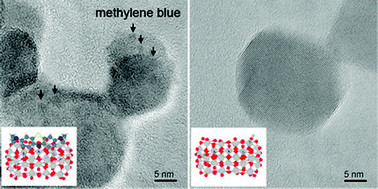Photocatalytic and degradation mechanisms of anatase TiO2: a HRTEM study
Abstract
The photocatalytic process for degradation of

* Corresponding authors
a School of Physics and Technology and Key Laboratory of Artificial Micro- and Nano-structures of Ministry of Education, Wuhan University, Wurhan, P. R. China
b
Center for Electron Microscopy, Wuhan University, Wuhan 430072, P. R. China
E-mail:
cxpan@whu.edu.cn
Fax: +86-27-6875-2003
Tel: +86-27-6875-2969
The photocatalytic process for degradation of

 Please wait while we load your content...
Something went wrong. Try again?
Please wait while we load your content...
Something went wrong. Try again?
J. Zhang, Y. Zhang, Y. Lei and C. Pan, Catal. Sci. Technol., 2011, 1, 273 DOI: 10.1039/C0CY00051E
To request permission to reproduce material from this article, please go to the Copyright Clearance Center request page.
If you are an author contributing to an RSC publication, you do not need to request permission provided correct acknowledgement is given.
If you are the author of this article, you do not need to request permission to reproduce figures and diagrams provided correct acknowledgement is given. If you want to reproduce the whole article in a third-party publication (excluding your thesis/dissertation for which permission is not required) please go to the Copyright Clearance Center request page.
Read more about how to correctly acknowledge RSC content.
 Fetching data from CrossRef.
Fetching data from CrossRef.
This may take some time to load.
Loading related content
